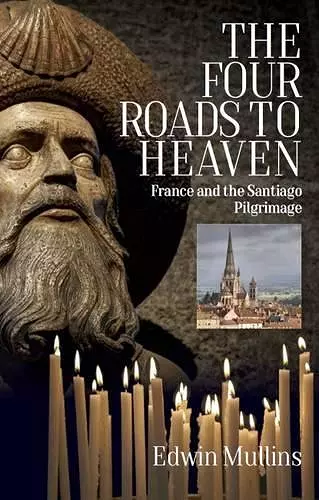The Four Roads to Heaven
France and the Santiago Pilgrimage
Format:Paperback
Publisher:Signal Books Ltd
Published:27th Apr '17
Should be back in stock very soon

'There are four roads leading to Santiago, which combine to form a single road'So begins The Pilgrim's Guide, the world's first guidebook. Written early in the twelfth century by Benedictine monks, it served travellers taking part in the great pilgrimage of the Middle Ages, to the tomb of the apostle St James, the cousin of Christ, at Santiago de Compostela in north-west Spain. The four roads are all in France: from Paris in the north; from Vezelay in Burgundy; from Le Puy-en-Velay in the Massif Central; and from Arles in Provence - all threading their way across the country before joining as a single road in northern Spain. A step-by-step account of these four journeys through medieval France, the Guide's aim was to explain to pilgrims the religious sites they would see on their way to Santiago, but it also offered advice on where to stay, what to eat and drink, and how to avoid dishonest innkeepers and murderous boatmen.Edwin Mullins follows the same four roads as they exist today in the footsteps of those medieval travellers. He explores the magnificent churches, abbeys and works of art which are the proud legacy of the pilgrimage, as well as reconstructing a turbulent period of history that encompassed wars, crusades and the Reconquest of Spain. Many of the buildings and landmarks that sprang up along the pilgrim routes still stand there today, and The Four Roads to Heaven brings to life their historical, architectural and spiritual significance. From imposing Romanesque and Gothic cathedrals to humble pilgrims' hospices, this book looks at the living legacy of one of the great social phenomena of the Middle Ages - the pilgrimage to Santiago. Richly illustrated with Adam Woolfitt's colour photographs, The Four Roads to Heaven offers an invaluable guide - nine hundred years after its predecessor - to the paths still trodden by increasing numbers of pilgrims.
'Mullins combines armchair travel with social history in this enticing exploration of the pilgrimage to Santiago of Compostela. . . . Beyond an imaginative travelogue, Mullins also provides insights into the role of the pilgrimage during the re-Christianisation of Moorish Spain. Readers with an interest in European spiritual history or church architecture will appreciate this window into the lush world of medieval Christianity.' --Publishers Weekly; 'Writer/journalist/filmmaker Mullins (The Pilgrimage to Santiago) offers a detailed, enjoyable examination of 'the social phenomenon which has been the Santiago pilgrimage,' the ancient walk to the tomb of Saint James in Santiago de Compostela, Spain. . . . Numerous photographs show some of the statues and carvings described in the book. VERDICT: Essential for potential pilgrims and an excellent European history for others.'--Library Journal (starred review); 'There are other important pilgrimages in the world--to Jerusalem, Rome, and Mecca, for example--but the pilgrimage to Santiago has 'captured the imagination of Christian Europe' since St. James, the patron saint of Spain, became a symbol of fidelity. As Mullins traces the history of the odyssey to the apostle's shrine, he notes that singing was a popular component of the pilgrimage and special songs were written as poet-minstrels entertained the pilgrims. In other words, 'a pilgrimage could be fun.' Part medieval history and part modern-day travel guide, Mullins' in-depth volume, including colour photographs, brings St. James' story to life.' –Booklist; 'This is a hugely readable, erudite and evocative book and no one who loves the pilgrim roads, loves France's past--manifest in its architecture--and its present landscape could fail to enjoy it.'--Confraternity of Saint James Bulletin
ISBN: 9781909930506
Dimensions: unknown
Weight: unknown
256 pages